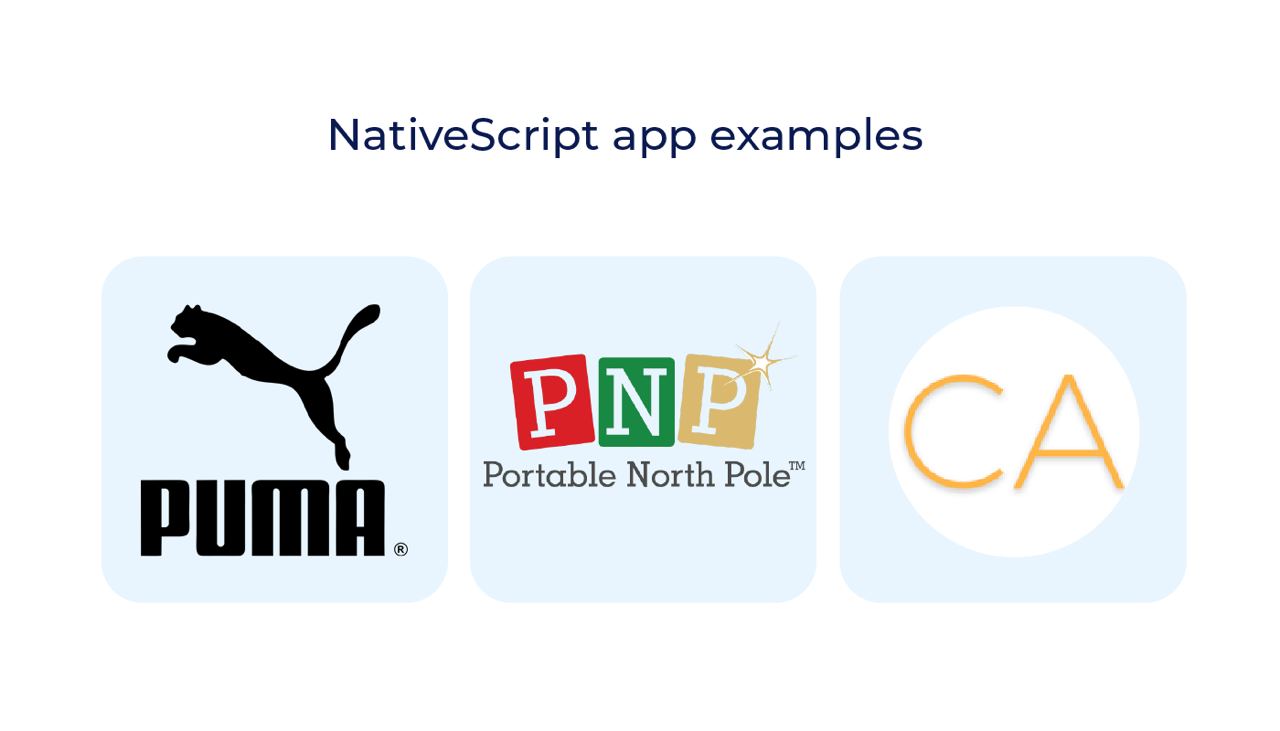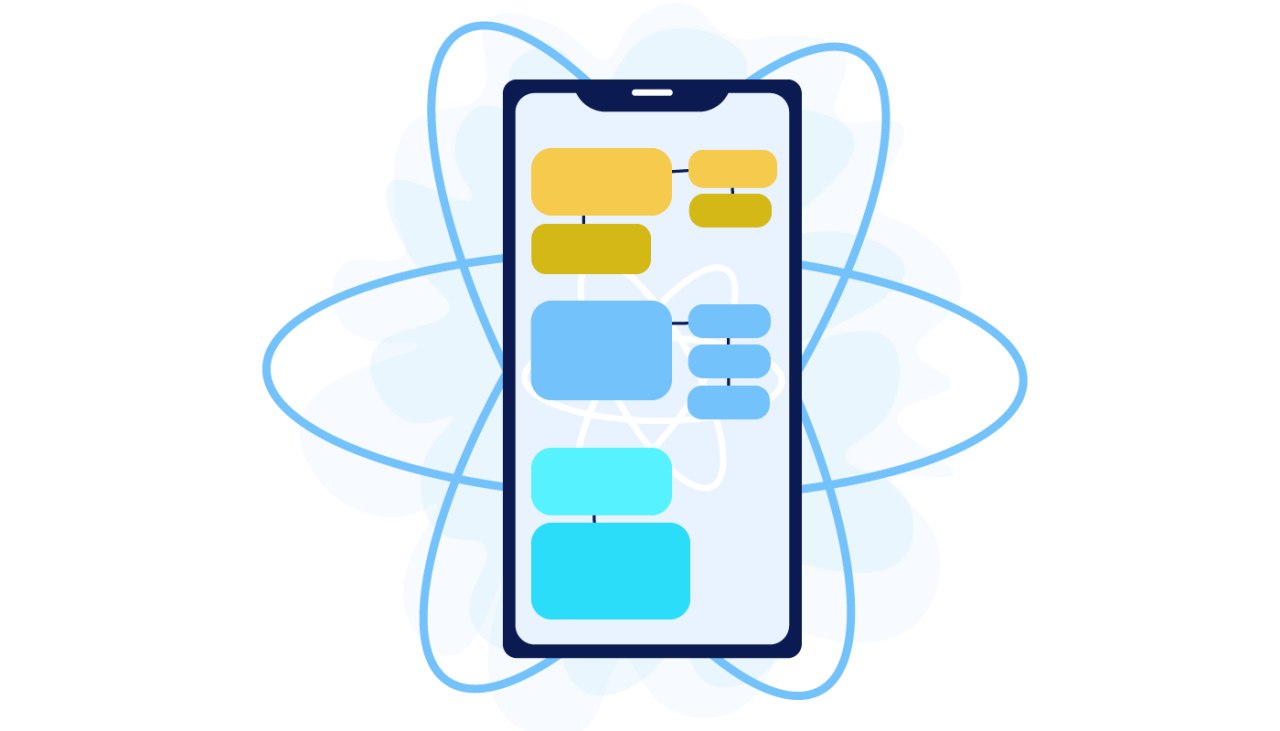Do you like playing PokemonGo on your smartphone? If you do, here is an interesting fact for you to know – it’s a native mobile app. It means that PokemonGo works only on specific mobile platforms – whether on iOS or Android.
In general, native mobile development is time-consuming. But it has numerous benefits like seamless app performance, fast operating speed, up-to-date SDKs, highly responsive UIs, and others.
In our article, we compare two technologies – React Native and NativeScript – used in native mobile development.
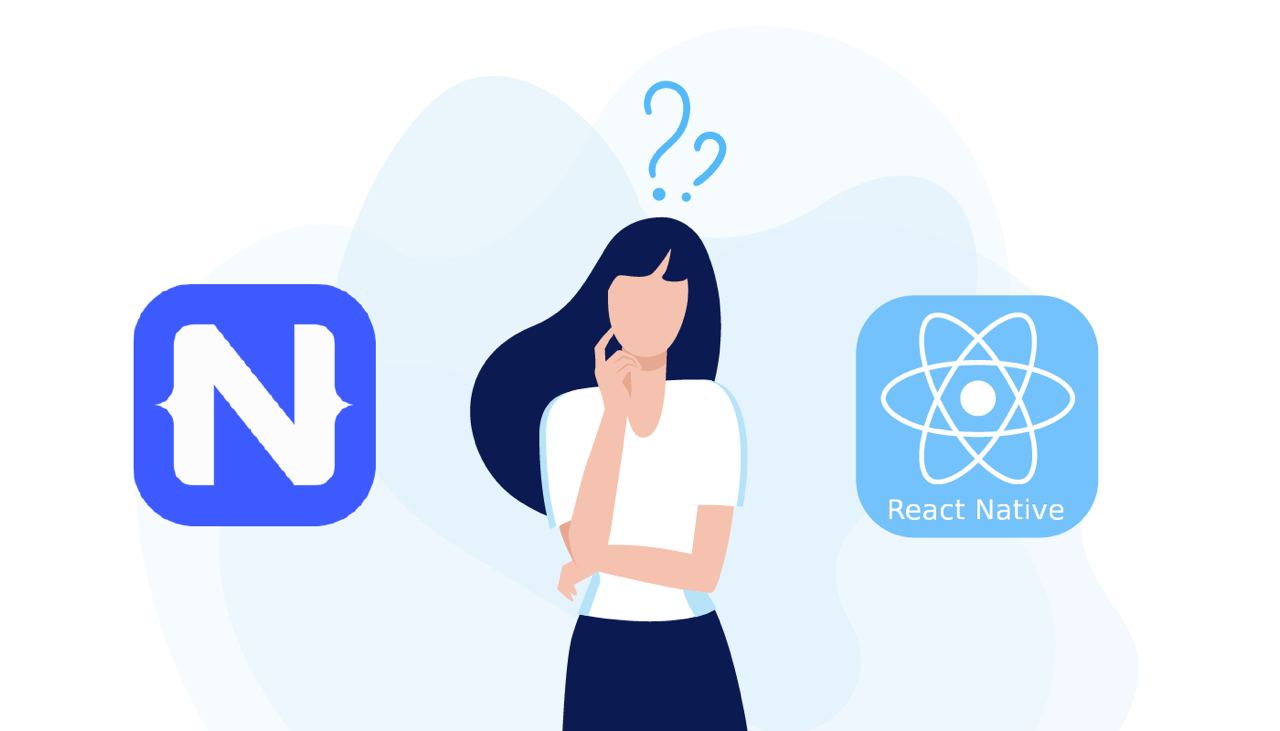
What are NativeScript and React Native?
NativeScript is an open-source framework that lets developers build apps on iOS and Android platforms. Created by Telerik or Progress, this technology got 3,000 stars on GitHub just in two months after its first release in 2015. Now, NativeScript has more than 700 plugins and supports Angular and Vue.js frameworks, but it’s not that popular among developers as React Native.
React Native is one of the most used frameworks in the world. Nearly 11.5% developers use it to create high-quality apps. The benefits of React Native for native app development encompass top-notch app performance, fast iteration and hot reloading for better file refreshment.
What Apps are Built With React Native and NativeScript?
React Native and NativeScripts aren’t old timers in the software development world. But both of them were implemented to build top-notch native apps, aiming to win users’ hearts and minds.
So, let’s mention a few apps created with the above-mentioned frameworks.
NativeScript app examples:
- MyPuma is the app released on iOS and Android platforms to sell sports products from a renowned wholesale retailer – Puma.
- Portable North Pole enables users to send textual and video greetings from Santa Claus to friends and family.
- California Court Access serves like a reminder for users about their court gatherings in the California region.
- Discord is the app for game lovers.
- SoundCloud is the online platform for spreading music tracks across the globe.
- Vogue World is the app where users can read news and top stories about fashion.
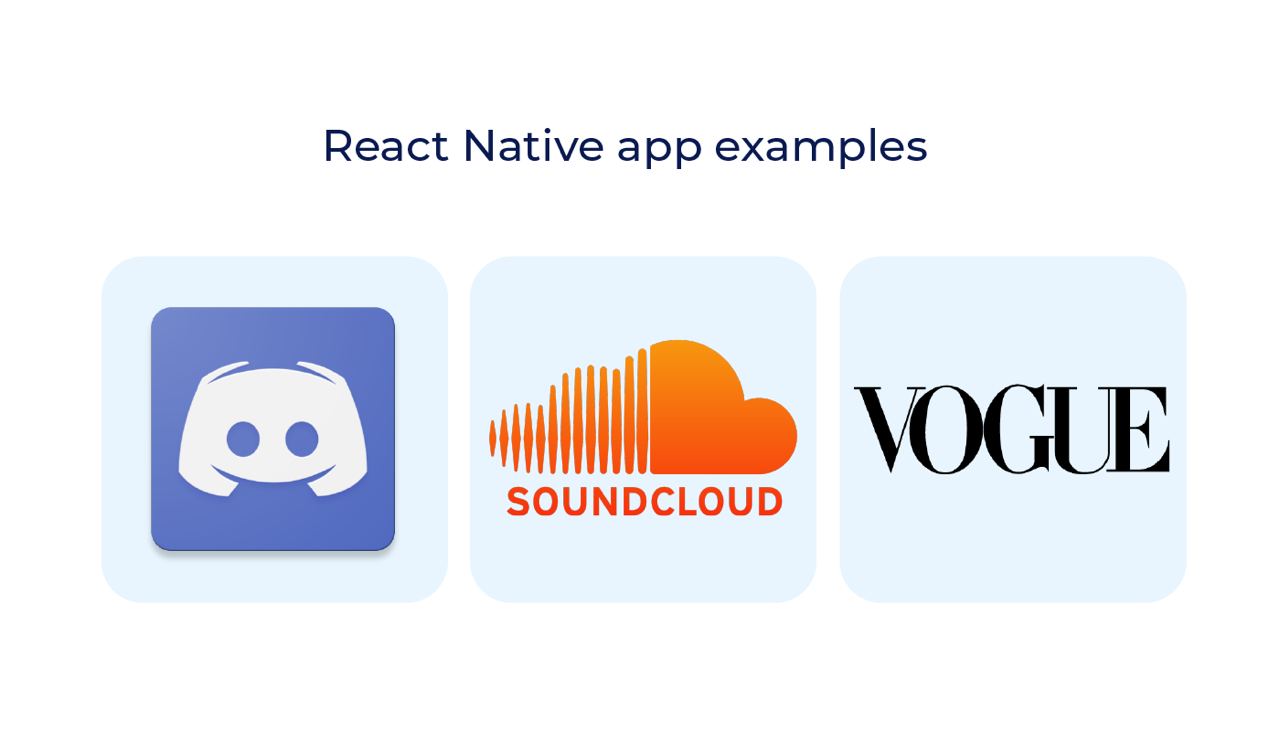
NativeScript vs React Native: Key Differences
Developers use React Native and NativeScript to create native mobile apps for iOS and Android devices. But these frameworks have different approaches to app performance, access to native APIs, architecture, learning curve, and so on. That is why we want to discover how React Native and NativeScript differ from each other.
Learning Curve
When it comes to measuring the output and time spent on app development, we rely on the learning curve. So, let’s find out where this criterion is better in NativeScript or React Native.
The great way that distinguishes NativeScript from other frameworks is the ability to create apps in several combinations like:
- NativeScript and JavaScript.
- NativeScript and Vue.js.
- NativeScript and Angular.
- NativeScript and TypeScript.
Winfred Van Egteren, a component architect from Triodos Bank, applied NativeScript to app development. Here is what he thinks of this experience:
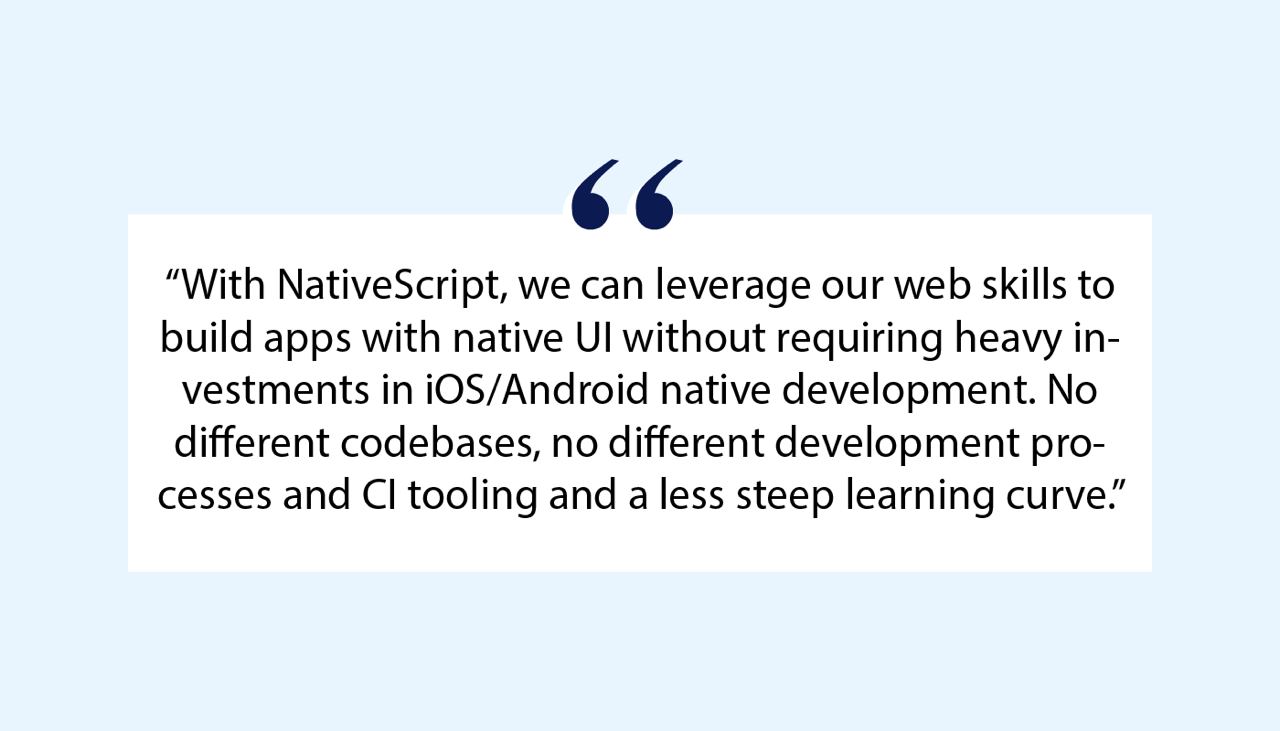
With React Native, changes to UI are calculated on a UI thread, which leads to responsive UIs. Its flip side is that if you want to use native APIs or custom components, you should know Objective-C for iOS and Java for Android to access them.
In the case of NativeScript, developers implement the UI thread to execute the UI. The other benefits of this framework are simple access to native APIs, smoothly created animations, and zero-day support for OS releases.
Programming Languages
NativeScript uses TypeScript as a programming language for writing code, while React Native – JavaScript, Kotlin, Java, Objective-C, and Swift. Each of them is implemented for different purposes to build React Native apps:
- Kotlin is a good option if you want to bridge UI components and native Kotlin modules.
- JavaScript highlights errors during runtime while creating a native app.
- Objective-C and Swift are mainly used to develop iOS apps.
- Java is implemented when you need to create an app for the Android platform.
The main features of TypeScript include:
- It shows errors in compile time.
- It’s static.
- It’s used for client and server side executions.
Native APIs
ReactNative has a basic set of native API modules that allows developers to build the app. But when it comes to having access to more complicated functionalities, you should find the required bridges by yourself.
In contrast, NativeScript injects Android and iOS APIs into the JavaScript Virtual Machine (JVM). So access to native APIs can be done without knowledge of programming languages used for native app development.
Plugins and Third-Party Libraries
NativeScript’s plugins are available on the NativeScript official website. It’s one of the features that React Native lacks. This framework relies on third-party plugins located on the outside resources like GitHub and repositories. It’s one of the React Native’s downsides, causing disrupted discontinuation, which leads to more costs and development time.
NativeScript supports native libraries that derive from plugins. With React Native, the situation is different. This framework has its own component libraries like NativeBase or MaterialKit React Native to build native UIs for mobile apps.
Performance
Both NativeScript and ReactNative provide native app performance. And both of them have high loading time (60 frames per second) at runtime. But there are two main differences between NativeScript and React Native when it comes to native mobile performance:
Difference 1: React Native offers faster UI rendering than NativeScript thanks to Virtual DOM.
Difference 2: React Native has more native performance than NativeScript.
Development Community
React Native has a bigger community of developers than NativeScript. The first framework is used among 42% of programmers, whilst the second one – 11%. Moreover, React Native is more popular and such renowned companies as Tesla and Instagram chose this framework to build their apps over NativeScript, PhoneGap and others.
Pros and Cons of React Native and NativeScript for Native Mobile Development
The native mobile development process with React Native and NativeScript has its own benefits and drawbacks. That is why we’re going to take a closer look at pros and cons of these two frameworks.

NativeScript
Pros:
- You can build Android and iOS NativeScript apps on remote servers.
- Native UI rendering without WebViews.
- Direct access to all iOS and Android APIs.
- It’s easy to write and deploy native apps on iOS and Android platforms with a single codebase.
- NativeScript updates versions and features in accordance with newest OS releases.
- Excellent integration with Angular and Vue.js features.
- It’s possible to extend and customize CLI (command-line interface) by using hooks.
Cons:
- No HTML and DOM support.
- It’s hard to share code with a web build during the process of app development.
- Documentation doesn’t have all updates and changes related to NativeScript use.
- The hot reload is available only when there is the need to change a UI or CSS file.
- The absence of ready-made UI collections.
- UIs aren’t free.
React Native
Pros:
- Better hot reloading so that developers can inject app components at ease.
- Native controls and modules improve app performance significantly.
- Smooth UI development.
- Fast app development process.
- High app performance.
- Seamless debugging.
- Large community of developers.
Cons:
- Manual processing of data changes.
- Poorly written documentation.
- React Native supports JavaScript language, which is slower for heavy calculations in native mobile development than Swift or Objective-C.
- Developers should write native modules when the essential app functionality isn’t available on React Native.
A Recap: So, Which Framework to Choose – React Native or NativeScript?
React Native has more advantages than NativeScript in terms of native performance and development process. Another benefit of choosing this framework over NativeScript is that it’s suitable for building large apps with complex business logic. But the final decision about choosing the right framework for your native mobile app depends on your development approaches, time frames, and goals.
Have a mobile app idea in mind? If so, reach out to LITSLINK, and get information about our React Native software development services to scale your business to the highest levels!

